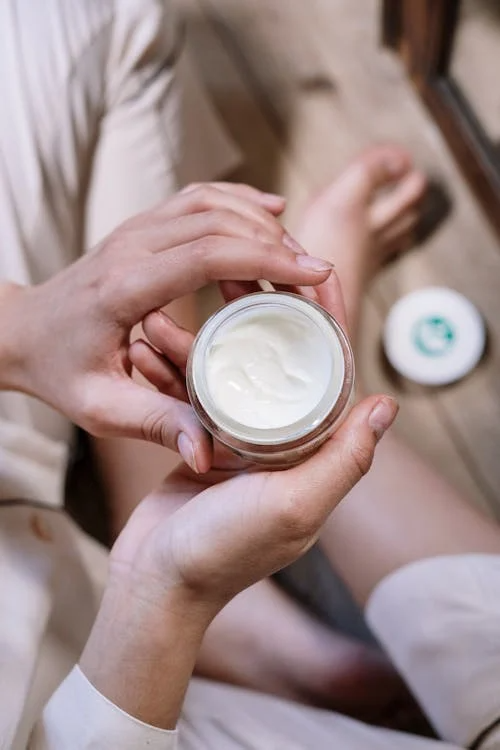What You Should Know About Parabens, According to Skin Experts
- Kaye's Beauty

- Aug 8
- 3 min read
Updated: Aug 17

Beauty products have evolved significantly since the days of cold creams and heavy pancake makeup. But with innovation comes complexity—especially when it comes to understanding ingredients like parabens. Recently, parabens have sparked concern as scientists continue to evaluate their safety. But what exactly are parabens, and why are they under scrutiny?
Are Parabens Bad for You?
There’s no definitive answer—hence the decades-long debate. Parabens have been used in cosmetics for many years, but concerns have grown due to their ability to mimic estrogen. One small study in the early 2000s detected traces of parabens in breast cancer tissue, sparking fears about a potential link between parabens and breast cancer. While the research did not establish a direct causal relationship, it confirmed that parabens can be absorbed through the skin and enter the body.
The primary concern surrounding parabens is their potential role as endocrine disruptors—chemicals that may interfere with hormone production. Some researchers believe this hormone-mimicking effect could be linked to reproductive issues, developmental problems in children, and increased cancer risk. However, critics of the initial studies point out flaws, such as the lack of testing on healthy tissue, and emphasize that no clear scientific proof exists showing parabens cause harm in humans.
To know more on skincare ingredients shop our skincare ingredients dictionary on Amazon. Click here to shop.
Download our skincare ingredient scanner app from the google play store. Scan the ingredients at the back of the pack and know which ingredients are good or bad for your skin. Click here to download.
So, Are Paraben-Containing Products Safe?
According to regulatory bodies like the FDA and the European Union, parabens are currently considered safe for use in cosmetics at low concentrations—generally up to 0.4%, depending on the type. Most products use even less than that. These preservatives are effective at preventing bacteria and mold, making them valuable for product stability and safety.
Despite the scientific consensus on safety at approved levels, the use of parabens remains a contentious topic. In fact, the EU ruled in 2019 that marketing a product as “paraben-free” could unfairly stigmatize other products that use approved parabens safely and responsibly. Still, many brands have opted to exclude parabens entirely, citing a precautionary approach to avoid even theoretical risks.
Some companies now follow the principle that if an ingredient is under enough scrutiny—whether or not it’s been proven harmful—it’s better left out. Their reasoning? Powerful preservatives that extend shelf life might also affect the integrity of beneficial ingredients in the product.
Environmental Concerns About Parabens
Parabens have also been detected in marine wildlife and aquatic environments, likely as a result of decades of cosmetic use. While levels are low, and no definitive environmental harm has been proven, the presence of parabens in water supplies, rivers, and oceans has raised environmental concerns. As with human health, the long-term environmental impact remains unclear.
What Products Contain Parabens?
Parabens can be found in a wide range of personal care and cosmetic products—including moisturizers, shampoos, conditioners, toothpaste, sunscreens, deodorants, shaving products, makeup, and more. They’re typically easy to spot on ingredient labels, as their names always end in “-paraben” (like methylparaben, propylparaben, or butylparaben).
What Are the Alternatives?
For those who prefer to avoid parabens, there are plenty of options available. Preservative alternatives include sodium benzoate, potassium sorbate, salicylic acid, benzoic acid, and sorbic acid. Choosing products with airtight packaging can also help limit bacterial contamination without relying heavily on preservatives.
Keep in mind, though, that going paraben-free means you’ll need to pay closer attention to expiration dates. Look for the open-jar symbol on the packaging to see how many months a product remains safe after opening. If it’s expired, it’s best to discard it.
The Final Takeaway
Although no conclusive link has been found between parabens and serious health issues, the conversation continues. For now, parabens remain legally approved and widely used. Ultimately, the choice is personal—whether you opt for traditional formulas or play it safe with paraben-free alternatives.
Kaye's Beauty Book is here to help you choose better products that suit your skin, hair and lifestyle. All of the products mentioned are carefully researched and selected to ensure that the most credible information comes to you. If you do buy a product from one of our links, Kaye's Beauty Book may earn a commission.
II DISCLAIMER: Every skin is different, not everything works for everybody. I recommend you test the product before completely using any new product. II







Comments